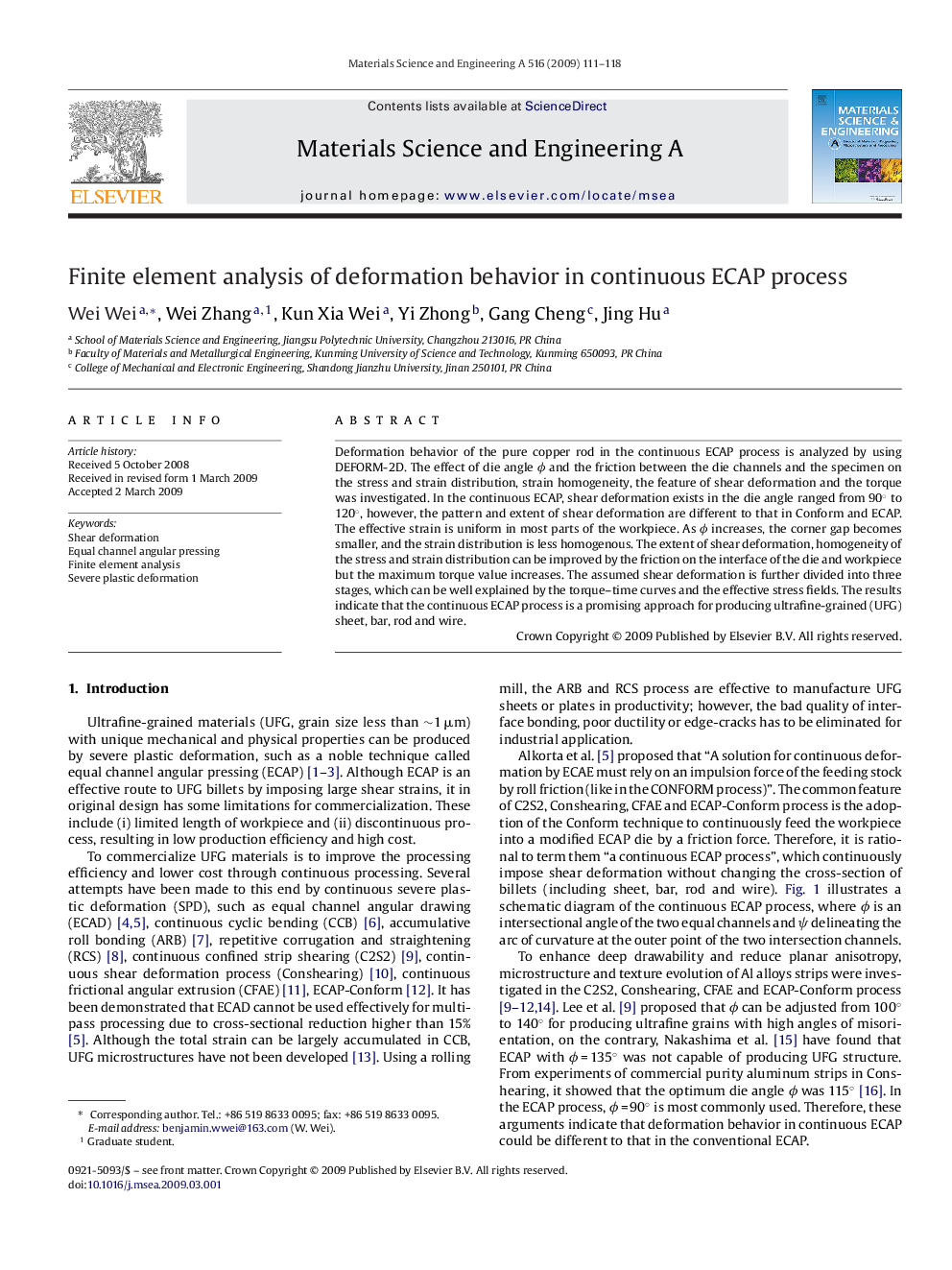| Article ID | Journal | Published Year | Pages | File Type |
|---|---|---|---|---|
| 1580200 | Materials Science and Engineering: A | 2009 | 8 Pages |
Deformation behavior of the pure copper rod in the continuous ECAP process is analyzed by using DEFORM-2D. The effect of die angle ϕ and the friction between the die channels and the specimen on the stress and strain distribution, strain homogeneity, the feature of shear deformation and the torque was investigated. In the continuous ECAP, shear deformation exists in the die angle ranged from 90° to 120°, however, the pattern and extent of shear deformation are different to that in Conform and ECAP. The effective strain is uniform in most parts of the workpiece. As ϕ increases, the corner gap becomes smaller, and the strain distribution is less homogenous. The extent of shear deformation, homogeneity of the stress and strain distribution can be improved by the friction on the interface of the die and workpiece but the maximum torque value increases. The assumed shear deformation is further divided into three stages, which can be well explained by the torque–time curves and the effective stress fields. The results indicate that the continuous ECAP process is a promising approach for producing ultrafine-grained (UFG) sheet, bar, rod and wire.
